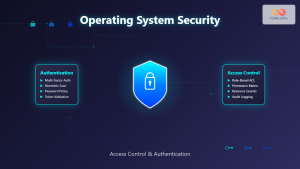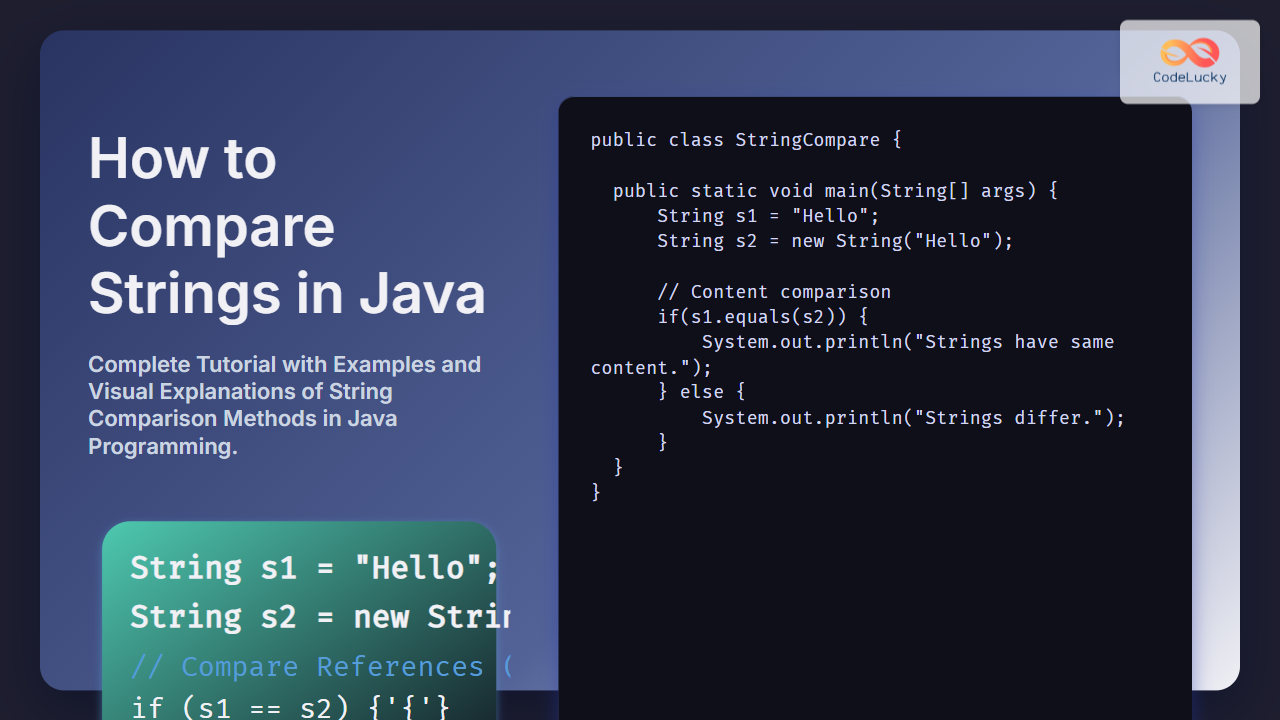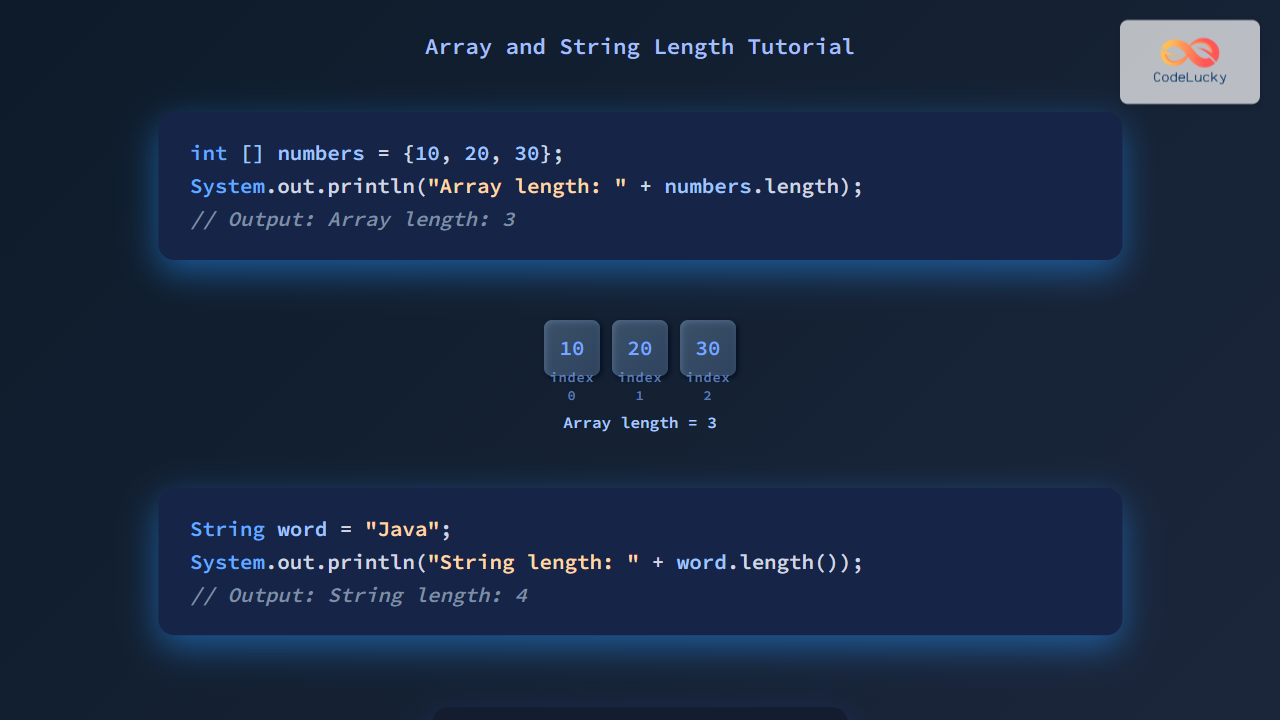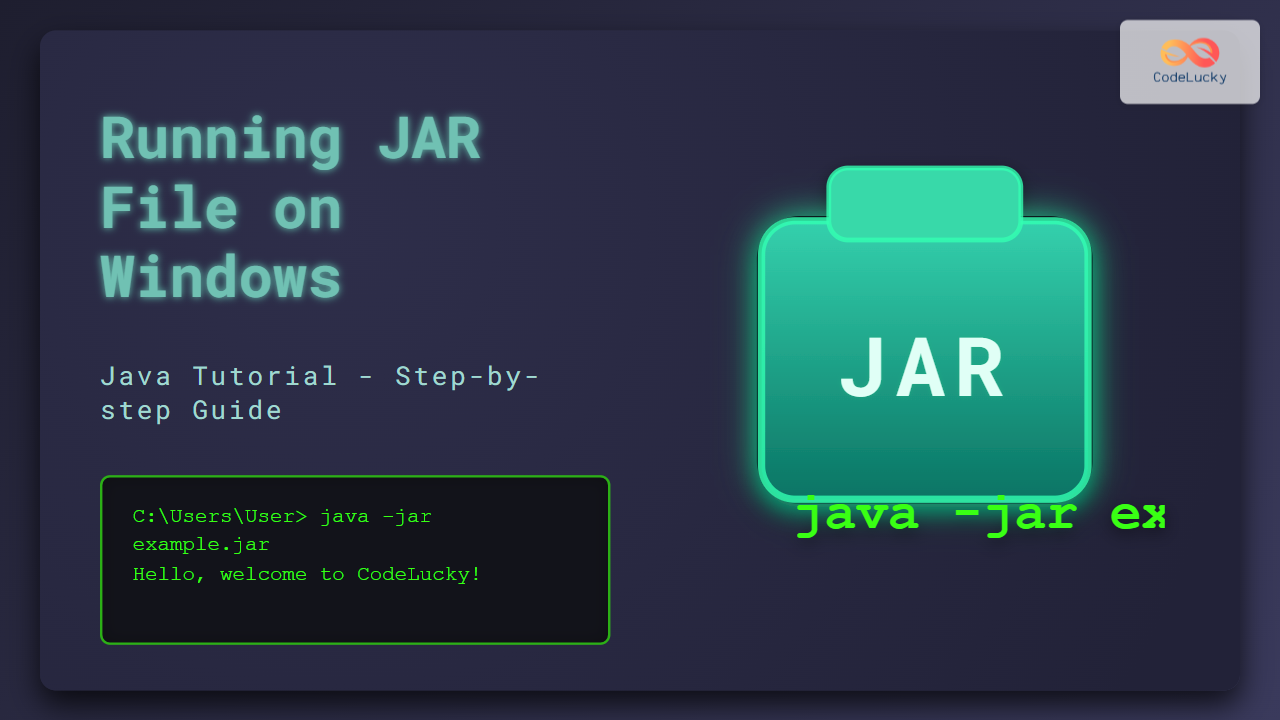Java, renowned for its "write once, run anywhere" philosophy, has always placed a strong emphasis on security. In today's digital landscape, where cyber threats are increasingly sophisticated, understanding and implementing robust security measures in Java applications is more crucial than ever. This comprehensive guide will delve into the fundamental concepts of Java security and demonstrate practical implementations to fortify your applications.
Understanding Java Security Architecture
Java's security architecture is built on several key pillars:
- Bytecode Verification 🔍
- Class Loader 📦
- Security Manager 🛡️
- Access Controller 🚦
Let's explore each of these components in detail.
Bytecode Verification
Bytecode verification is Java's first line of defense. When Java code is compiled, it's transformed into bytecode, which is then verified by the Java Virtual Machine (JVM) before execution.
public class BytecodeExample {
public static void main(String[] args) {
int x = 5;
int y = 10;
System.out.println("Sum: " + (x + y));
}
}
When this code is compiled and run, the JVM verifies the bytecode to ensure:
- The code doesn't violate Java's type system
- There are no stack overflow or underflow issues
- The code doesn't illegally access memory
Class Loader
The Class Loader is responsible for loading Java classes and interfaces into the JVM. It follows three principles:
- Delegation
- Visibility
- Uniqueness
Here's an example of a custom class loader:
public class CustomClassLoader extends ClassLoader {
@Override
public Class findClass(String name) throws ClassNotFoundException {
byte[] b = loadClassFromFile(name);
return defineClass(name, b, 0, b.length);
}
private byte[] loadClassFromFile(String fileName) {
// Load the class file as bytes
// Implementation details omitted for brevity
return new byte[0];
}
}
This custom class loader allows you to load classes from specific locations or with custom logic, enhancing security by controlling which classes are loaded and how.
Security Manager
The Security Manager is Java's main gatekeeper, controlling access to sensitive operations. Here's how you can set up a custom Security Manager:
public class CustomSecurityManager extends SecurityManager {
@Override
public void checkPermission(Permission perm) {
if (perm.getName().contains("exitVM")) {
throw new SecurityException("Exit not allowed");
}
}
}
public class SecurityManagerExample {
public static void main(String[] args) {
System.setSecurityManager(new CustomSecurityManager());
try {
System.exit(0);
} catch (SecurityException e) {
System.out.println("Caught SecurityException: " + e.getMessage());
}
}
}
In this example, we've created a custom Security Manager that prevents the application from exiting. When you run this code, you'll see:
Caught SecurityException: Exit not allowed
Access Controller
The Access Controller works in tandem with the Security Manager to enforce access control policies. Here's an example of how to use the Access Controller:
import java.security.AccessController;
import java.security.PrivilegedAction;
public class AccessControllerExample {
public static void main(String[] args) {
// Perform a privileged action
String result = AccessController.doPrivileged(
new PrivilegedAction<String>() {
public String run() {
// Perform sensitive operation here
return "Sensitive operation completed";
}
}
);
System.out.println(result);
}
}
This code demonstrates how to perform a privileged action using the Access Controller, allowing certain code to temporarily elevate its permissions.
Implementing Encryption in Java
Encryption is a cornerstone of data security. Java provides robust support for various encryption algorithms through its Java Cryptography Architecture (JCA) and Java Cryptography Extension (JCE).
Symmetric Encryption
Symmetric encryption uses the same key for both encryption and decryption. Here's an example using AES (Advanced Encryption Standard):
import javax.crypto.Cipher;
import javax.crypto.KeyGenerator;
import javax.crypto.SecretKey;
import java.util.Base64;
public class AESExample {
public static void main(String[] args) throws Exception {
String originalString = "This is a secret message";
// Generate a secret key
KeyGenerator keyGen = KeyGenerator.getInstance("AES");
keyGen.init(256);
SecretKey secretKey = keyGen.generateKey();
// Encrypt the string
Cipher cipher = Cipher.getInstance("AES");
cipher.init(Cipher.ENCRYPT_MODE, secretKey);
byte[] encryptedBytes = cipher.doFinal(originalString.getBytes());
String encryptedString = Base64.getEncoder().encodeToString(encryptedBytes);
System.out.println("Encrypted: " + encryptedString);
// Decrypt the string
cipher.init(Cipher.DECRYPT_MODE, secretKey);
byte[] decryptedBytes = cipher.doFinal(Base64.getDecoder().decode(encryptedString));
String decryptedString = new String(decryptedBytes);
System.out.println("Decrypted: " + decryptedString);
}
}
This code demonstrates how to:
- Generate a secret key for AES
- Encrypt a string using this key
- Decrypt the encrypted string back to its original form
The output will look something like this:
Encrypted: 9X5Uy7+1tL5Qr3vXJvXK3Q==
Decrypted: This is a secret message
Asymmetric Encryption
Asymmetric encryption uses a pair of keys: a public key for encryption and a private key for decryption. Here's an example using RSA:
import java.security.*;
import javax.crypto.Cipher;
import java.util.Base64;
public class RSAExample {
public static void main(String[] args) throws Exception {
String originalString = "This is a secret message";
// Generate key pair
KeyPairGenerator keyPairGen = KeyPairGenerator.getInstance("RSA");
keyPairGen.initialize(2048);
KeyPair pair = keyPairGen.generateKeyPair();
PublicKey publicKey = pair.getPublic();
PrivateKey privateKey = pair.getPrivate();
// Encrypt the string
Cipher cipher = Cipher.getInstance("RSA/ECB/PKCS1Padding");
cipher.init(Cipher.ENCRYPT_MODE, publicKey);
byte[] encryptedBytes = cipher.doFinal(originalString.getBytes());
String encryptedString = Base64.getEncoder().encodeToString(encryptedBytes);
System.out.println("Encrypted: " + encryptedString);
// Decrypt the string
cipher.init(Cipher.DECRYPT_MODE, privateKey);
byte[] decryptedBytes = cipher.doFinal(Base64.getDecoder().decode(encryptedString));
String decryptedString = new String(decryptedBytes);
System.out.println("Decrypted: " + decryptedString);
}
}
This example shows how to:
- Generate a key pair for RSA
- Encrypt a string using the public key
- Decrypt the encrypted string using the private key
The output will be similar to:
Encrypted: mHU3LrZ7Uh+...
Decrypted: This is a secret message
Implementing Secure Communication with SSL/TLS
Secure Sockets Layer (SSL) and its successor, Transport Layer Security (TLS), are cryptographic protocols designed to provide secure communication over a computer network. Java provides robust support for SSL/TLS through its JSSE (Java Secure Socket Extension) API.
Here's an example of a simple HTTPS server and client using SSL/TLS:
import javax.net.ssl.*;
import java.io.*;
import java.security.*;
public class SSLExample {
public static void main(String[] args) throws Exception {
// Set up the key store
char[] keystorePassword = "password".toCharArray();
KeyStore ks = KeyStore.getInstance("JKS");
FileInputStream fis = new FileInputStream("keystore.jks");
ks.load(fis, keystorePassword);
// Set up the key manager factory
KeyManagerFactory kmf = KeyManagerFactory.getInstance("SunX509");
kmf.init(ks, keystorePassword);
// Set up the trust manager factory
TrustManagerFactory tmf = TrustManagerFactory.getInstance("SunX509");
tmf.init(ks);
// Set up the HTTPS context and parameters
SSLContext ctx = SSLContext.getInstance("TLS");
ctx.init(kmf.getKeyManagers(), tmf.getTrustManagers(), null);
SSLServerSocketFactory sslServerSocketFactory = ctx.getServerSocketFactory();
SSLServerSocket sslServerSocket = (SSLServerSocket) sslServerSocketFactory.createServerSocket(8443);
System.out.println("SSL server started");
SSLSocket sslSocket = (SSLSocket) sslServerSocket.accept();
// Handle client connection
BufferedReader in = new BufferedReader(new InputStreamReader(sslSocket.getInputStream()));
PrintWriter out = new PrintWriter(sslSocket.getOutputStream(), true);
String line = in.readLine();
System.out.println("Server received: " + line);
out.println("Hello, " + line);
sslSocket.close();
}
}
This example demonstrates:
- Setting up a KeyStore with a certificate
- Configuring SSL context with key managers and trust managers
- Creating an SSL server socket
- Handling a secure connection with a client
To run this example, you'll need to create a keystore file (keystore.jks) with a valid certificate. You can do this using Java's keytool utility:
keytool -genkeypair -alias serverkey -keyalg RSA -keysize 2048 -keystore keystore.jks -validity 365
Implementing Authentication and Authorization
Authentication and authorization are crucial aspects of application security. Java provides several mechanisms to implement these, including the Java Authentication and Authorization Service (JAAS).
Here's a simple example of using JAAS for authentication:
import javax.security.auth.*;
import javax.security.auth.login.*;
import java.security.Principal;
import java.util.Set;
public class JAASExample {
public static void main(String[] args) throws Exception {
// Set the login configuration
System.setProperty("java.security.auth.login.config", "jaas.config");
// Create a login context
LoginContext lc = new LoginContext("MyLogin", new CallbackHandler() {
public void handle(Callback[] callbacks) throws IOException, UnsupportedCallbackException {
for (Callback callback : callbacks) {
if (callback instanceof NameCallback) {
((NameCallback) callback).setName("username");
} else if (callback instanceof PasswordCallback) {
((PasswordCallback) callback).setPassword("password".toCharArray());
}
}
}
});
// Attempt to authenticate
try {
lc.login();
System.out.println("Authentication successful");
// Get the authenticated subject
Subject subject = lc.getSubject();
Set<Principal> principals = subject.getPrincipals();
for (Principal p : principals) {
System.out.println("Authenticated user: " + p.getName());
}
} catch (LoginException e) {
System.out.println("Authentication failed: " + e.getMessage());
}
}
}
This example demonstrates:
- Setting up a JAAS login configuration
- Creating a LoginContext with a CallbackHandler for providing credentials
- Attempting to authenticate a user
- Retrieving information about the authenticated subject
To run this example, you'll need a JAAS configuration file (jaas.config) that specifies the login module to use:
MyLogin {
com.sun.security.auth.module.UnixLoginModule required;
};
Best Practices for Java Security
To ensure the security of your Java applications, consider the following best practices:
-
Keep Java Updated 🔄: Always use the latest version of Java to benefit from the most recent security patches.
-
Use Strong Encryption 🔐: Implement strong encryption algorithms like AES for symmetric encryption and RSA for asymmetric encryption.
-
Secure Communication 🌐: Use SSL/TLS for all network communications to prevent eavesdropping and man-in-the-middle attacks.
-
Input Validation ✅: Always validate and sanitize user inputs to prevent injection attacks.
-
Principle of Least Privilege 🔑: Grant only the minimum necessary permissions to users and processes.
-
Secure Coding Practices 💻: Follow secure coding guidelines to prevent common vulnerabilities like SQL injection and cross-site scripting (XSS).
-
Regular Security Audits 🕵️: Conduct regular security audits and penetration testing to identify and address vulnerabilities.
-
Secure Configuration ⚙️: Ensure that your Java applications and the JVM are configured securely, disabling unnecessary features and services.
-
Use Security Frameworks 🛠️: Leverage established security frameworks like Spring Security for enterprise applications.
-
Logging and Monitoring 📊: Implement comprehensive logging and monitoring to detect and respond to security incidents quickly.
Conclusion
Java provides a robust set of tools and APIs for implementing security in your applications. From low-level bytecode verification to high-level encryption and authentication mechanisms, Java offers a comprehensive security framework that can be tailored to meet the needs of any application.
By understanding and implementing these security concepts, you can significantly enhance the security posture of your Java applications. Remember, security is not a one-time task but an ongoing process. Stay informed about the latest security threats and Java security features to keep your applications protected in an ever-evolving threat landscape.
As you continue to develop in Java, make security an integral part of your development process. By doing so, you'll not only protect your applications and data but also build trust with your users and stakeholders. Happy secure coding! 🚀🔒



















